Being an American, barley water is not part of my mental landscape. Perhaps it was big in the U.S. back in the Victorian era, but it seems to have faded from our national consciousness. Indeed, if you’re one of our American readers, you may be asking now: what the heck is it? My fellow Americans, barley water is a drink made from barley, lemon and sugar, known to be cooling and refreshing in the summer and perhaps somewhat healthy.
Meanwhile I do know that it is more popular in other parts of the world. I’ve seen it sold in bottles in Great Britain, and from the Internets I can see it’s known in Ireland and Australia. What say you, Canada? I’ve had unsweetened barley water in a can from a Japanese supermarket, and I believe unsweetened barley water is a health drink all the way from India to Japan. And of course, there’s hot and cold roasted barley tea in those parts, too.
Health claims for barely water vary depending on how and where it’s made. It has been used as a pap for infants, as a balm for digestive systems, to sooth sore throats and to cure UTIs, to promote lactation, and even to combat high blood pressure. This is all fascinating, but I’m just making it as a summer drink.
There’s lots of recipes for barley water on the web, and most of them seem to produce something very like lemonade, i.e. they are made with lots of citrus juice and sugar. But I found an old recipe in Google books (unfortunately I lost the source) which made a mild, barely sweet drink. I cannot say this is at all representative recipe, but I like it precisely because it is so mild–more in the family of cucumber water than lemonade, if you see what I mean. I also like it because there’s no cooking involved. I offer it as an alternative.
After I share my recipe, I’ll give some tips for finding your own barley water path.
I hope our readers will chime in and tell us where they’re from, if and how they make barley water, and whether they use it as a health drink, or just drink it for fun.
Mild, Not-So-Sweet Barley Water
2/3 cup uncooked barley (pearl or hulled)
4 cups (1 qt) boiling water
1 lemon
1 Tablespoon of sugar or other sweetener
A quart Mason jar
- Rinse the barley well, as you’d rinse rice. If you don’t, the finished drink looks even more like dishwater than usual.
- Put the rinsed barley into a quart-sized Mason jar.
- Peel the yellow skin (not the pith) from one half to one full organic lemon with a zester or vegetable peeler. Put the zest into the jar with the barley. You can go ahead and add a squeeze of lemon juice at this time, but I find I like less lemon flavor, so only use the zest.
- Add 1 Tablespoon of sugar.
- Pour boiling water over everything, filling the quart jar.
- Let the mix sit on the counter until it cools, about an hour. Then strain the liquid into another container and refrigerate. Drink when cold. Makes a quart.
Variations and notes:
–There are a million recipes for barley water out there. The most common cooking methodology, though, seems to be a short simmering of the barley in the water, instead of the soaking technique I’ve outlined above. A 20 to 30 minute simmer seems pretty standard. This will yield a more cloudy liquid. After straining the mix is flavored to taste with lemon juice and sugar.
–Longer simmering times result in a more viscous liquid which contains soothing properties and some vitamins. This is what they fed invalids and babies in the old days.
–Similarly, the more barley you use in proportion to water, the thicker and more barley-flavored the result.
–How much lemon and sweetener you want to use is entirely up to you. The recipes run the gamut from having no sweetener to super-sweet.
–Variant flavors include using other citrus flavors, like orange and lime, as well as ginger and mint.
— It is important that you remember to rinse the barley. I found swishing it in a bowl through a couple changes of water enough, but I’ve also seen it recommended that you rinse it with boiling water, and several recipes asked you to bring the barley and water to a boil for five minutes, then pour off the dirty water, replace it with clean and continue cooking.
–Pearl barley is barley that has had the bran scrubbed off of it. It’s what I find around here in grocery stores. Hulled barley is less common, but if you have access to a good health food store you should be able to find it. It’s more nutritious than the pearled kind.
–You will have leftover barley when you make this drink, but it need not be wasted. If you use one of the cooking methods, you’ll end up with a bowl of cooked barley. If you follow my recipe and just soak it, you’ll need to finish the cooking. Cooked barley can be dressed up many ways–it can become a nice snack (with salt and pepper and Parmesan cheese) or breakfast (with honey and fruit). Cooked barley can also thrown into stews or folded into breads. I just found an interesting barley cake recipe that I just might share soon, if it works.
Some other recipes you might enjoy:
A post explaining why barley water is ancient history (with recipes!): http://blog.kathrynmcgowan.com/2010/09/13/barley-water-an-ancient-refreshing-drink/
A Chinese barley water: http://www.noobcook.com/lemon-barley-drink/2/
Super citrus barley water: http://www.thekitchn.com/old-school-cooler-barley-water-122687

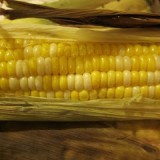
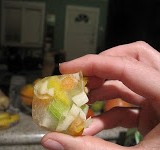
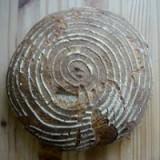
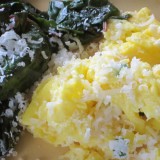
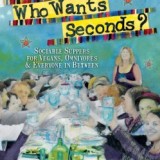
I’m from Australia and my mum used to make it when we were kids back in the 70s and 80s. She was getting into Macrobiotics at the time so I guess it was a healthy alternative to soft drinks and cordials (commercial) and having 5 children there was also an element of frugality too.
I really like the revival of all these different home made cordial drinks, they are subtle and vary with intriguing flavours, like elderflower, rhubarb and rosehip. The other benefit as you say is that the sugar content need not be so sweet as the commercially prepared ones.
It is good to be reminded of Barley water and I will be sure to make some this summer…or perhaps why not now, it is nice as a warm drink too.
I grew up with a Korean best-friend, and so I’m most familiar with Bori Cha, which is roasted barley water. We drink it hot in the summer and iced in the winter, although I don’t recall what her mother ever said about its health benefits…
I just wish I had a stand of barley to try it with! It seems like that would make it taste a little sweeter.
I’m an American who lived in France for a couple years and Estonia very briefly, and have never known anything of barley water beyond the reference in the Mary Poppins song (“Love us as a son and daughter, and never smell of baaaaarrley waaateeeerr…”). For whatever that’s worth.
My Grandma (British) gave us a similar barley lemon drink when we were sick but a Chilean friend gave us a drink with the barley still in the bottom of the glass and flavoured with crushed peaches……so good.
Ah, I’d wondered about Latin America!
I have some barley water in the fridge right now! After boiling the barley in water for 30 minutes (too long, I think; I ended up adding extra water at the end because too much of it boiled away), I added some lemon and lime juice and agave syrup. I didn’t rinse the barley before cooking, so it is quite cloudy. I wasn’t interested in health benefits–just wanted something cold and refreshing to drink after my bike ride home from work. I’ve also been eating the leftover cooked barley for breakfast this week, with papaya on top. I’ve never made barley water before this summer and have never lived anywhere it was popular (I’m from Oregon), but it has intrigued me ever since a friend who used to live in Japan told me everyone drank it during the hot summers. The recipe I used was from an English cookbook, but I’ve also tried an Indian version made with orange and lemon juices.
OK I googled it and the Chilean drink is known as Mote con Huesillo and is often made with wheat but barley is also used.
sadly, barley is one of the gluten grains, and for those of us going gluten free, barley is off our list. It would be interesting to know, for those of us gluten intolerant, but not celiac, if barley water would be okay, compared to the grain itself.
I must be in the root simple zone because I picked up pearled barley at Lessens (uh oh) the other day and soaked a cup overnight for cooking the next day. I saved the soaking water and found it to be very sweet and satisfying on its own without any additives.
I never even thought to make it myself! My husband is from the UK and we buy the concentrate from Fresh & Easy (they have a great UK section)
I, too, only know it from the Mary Poppins reference!
Japanese people drink it as “mugi-cha”, cold and unsweetened in the summer. Same as boricha in Korea. But the barley is roasted so it has kind of a chicory flavor to it. I buy it from the Asian grocery store – comes in big tea bags that you steep in a jug of water.
Just this year I’ve “discovered” barley, and it has become one of my favorite foods. I often wondered about the cooking water as I drained it from the pot, so I’m glad to hear about this. I will definitely be trying the versions you’ve mentioned.
Hi from New Zealand, as a child my mum would make lemon barley water. Not too sweet, nicely lemony and with a layer of sludge in the bottom of the glass!! I’m guessing she did the long boil method! Now I make my barley into soup or sometimes bread. I love its nutty flavour. Loretta
Alton Brown!
http://www.foodnetwork.com/recipes/alton-brown/barley-water-recipe/index.html
I’ve also read that barley water is lactogenic; ie it supports milk production in lactating women. I alway intended to make some spiced with the various other popular lactogenic herbs (fenugreek, fennel…) but haven’t yet. Its supposed to be blazing hot here this weekend maybe I’ll make some for a picnic
It’s delicious roasted. I dry-pop loose barley in a cast iron pan until it’s deep brown on the outside, then steep it in boiling water for 15 minutes or so.
i’m English, so brought up on the shop bought stuff (they sponsored Wimbledon so there was no getting away from it in the summer!) but I wouldn’t make any health claims for the stuff we drank in the 70’s!
I’ve made orange and lemon barleywater just as a drink but I guess I kind of hope it’s slightly good for you…
The cooked barley makes a good risotto-type dish too (a not very authentic orsotto).
Hm, how interesting! I’ve never had barley water, but it sounds worth trying. 🙂 I’m from Washington state.
I am an American but when I was a kid growing up we used to always go to Canadian doctors because they were closer/better/cheaper. One time when I was sick with some sort of tummy ailment the doctor told my mom to give me barley water. Not knowing what barley water was she gave me beer.
Maybe it’s ok for mothers, but it should never be given to babies instead of milk. Apparently L. Ron Hubbard has advocated it should be given instead of formula, which could be deadly.
Yeah, I wouldn’t advocate as infant formula. And I certainly would never take child care advice from L. Ron Hubbard.
I’m in Canada and I can say that barley water is available here, although it’s very uncommon.
I just got some for my poor, sick hubby at a our local British food shop today.
Hope the barley water helps!
In medival times they didnot have lemons just to tell u
From Canada. I am 65. My Dad usedto drink water with barley in it on hot summer days when he was a kid working in the fields. said it quenched his thirst.
I love barley water, without the lemon, with just a little honey to sweeten it. It’s a nice, refreshing drink. One thing to note, though, that barley water is not good for asthmatic sufferers, whether it is drunk hot or cold. I had childhood asthma and whenever I drink barley water, it brought on a terrible attack! Over here in Singapore, the “homemade barley” sold in the coffeeshops usually have bits of barley grains; most of us just eat the grains along with drinking the water. It is quite a common drink here
Pingback: Irish beauty secrets
I live in Chicago. There is a healthy restaurant that serves water from soaked raw barley. I soak my own and just drink the water and eat the soaked barley as a raw food. By the way, my cats love the barley soaking water, but not the raw barley.
Elyse, did you just soak the barley without boiling it? I am wondering what is the best for health benefits and flavour. Most of my google search says to cook it but some say just to soak. I am thinking of adding ginger and other fruit to flavour after the initial soak and no sugar if possible.
I have never tasted it before but going to give it a try! Thanks.
I found this post when looking for barley water recipes. I have just made a batch replacing the sugar with honey and it is delicious. Even though I washed the pearl barley there was scum on top when I did a rolling boil, so I just skimmed it off. Flavoured barley waters have always been a big thing over here in the UK.
Hi, I came across this webpage while doing some research on barley water recipes. I am Malaysian Indian n grew up drinking this in restaurants n at home. It was pretty common to ask for this as an accompaniment to dinners as it was considered good for digestion. Also, my mother used to give us barley water when we had fevers. It is also good to cool down a “heaty” body much as mangosteens do as my American hubby can attest to when he suffered from heat exhaustion during his first visit to my homeland. I hv always had sweetened barley water with the cooked barley at the bottom.
An easy source for barley is any online or local homebrew beer supply. Barley is malted, a process of wetting it and allowing it to just begin sprout then heating and drying it to stop the growth. It can then be bagged and is called MALT or it can then be roasted and given any number of names depending on its darkness of color and flavor……coffee, chocolate, honey etc.
Purchase prices can run anywhere from around $1 to $2 a pound.
If you have a coffee grinder you can run it through this to make a coffee/tea like grind or you could run through an electric chopper or food processor.
I have steeped it like you would tea in boiling water and in a drip coffee maker like coffee.
The result is a nice flavorful, slightly sweetened liquid that smells wonderful while brewing or steeping. I find no need to add any extra sweetener.
The soaking steeping process is exactly what is done in the ‘mashing’ step in making beer. Usually done at a lower temp of about 145F-160F This extracts the sugars from the barley which are drained off from the husks as liquid and then boiled for a period.